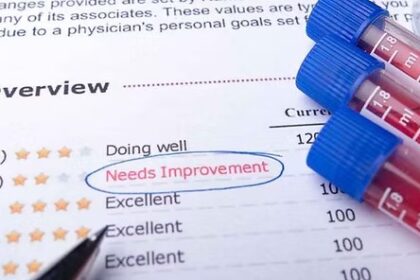A reverse mortgage is a financial tool that allows homeowners, typically seniors, to access the equity in their home without having to sell it or make monthly mortgage payments. In this guide, we will dive deep into reverse mortgages, explaining what they are, how they work, the pros and cons, and who qualifies. Whether you’re looking for more information for yourself or a loved one, this article will provide valuable insights into reverse mortgages in the USA.
What is a Reverse Mortgage?
A reverse mortgage is a special type of loan designed for homeowners aged 62 or older. Unlike a traditional mortgage where you make monthly payments to the lender, in a reverse mortgage, the lender makes payments to you. These payments can be structured in various ways: as a lump sum, monthly installments, or a line of credit. The loan is repaid when the homeowner sells the house, moves out, or passes away.
One of the biggest advantages of a reverse mortgage is that it does not require the homeowner to make monthly payments. Instead, the loan balance increases over time, which is repaid when the home is sold. The amount that can be borrowed depends on several factors, including the homeowner’s age, the home’s value, and current interest rates.
How Does a Reverse Mortgage Work?
A reverse mortgage works by converting the equity in your home into loan proceeds. The amount you can borrow is determined by the following factors:
- Age of the Borrower: The older you are, the more money you may be able to borrow. This is because lenders expect the loan to be repaid sooner.
- Home Value: The higher the value of your home, the more equity there is available to convert into a loan.
- Current Interest Rates: Lower interest rates tend to result in higher loan amounts.
- Property Type: Certain types of properties, like single-family homes or some multi-family properties, may qualify for larger loans.
When the loan is initiated, the homeowner can choose how they want to receive the funds. Options include a lump sum, monthly payments, or a line of credit that can be drawn upon as needed. Importantly, the homeowner retains ownership of the home and can continue living in it for as long as they wish, provided they meet the necessary requirements, such as paying property taxes, homeowner’s insurance, and maintaining the home.
Who Qualifies for a Reverse Mortgage?
Not everyone is eligible for a reverse mortgage. To qualify, a borrower must meet the following requirements:
- Age Requirement: The borrower must be at least 62 years old.
- Homeownership: The borrower must own their home outright or have a significant amount of equity in it.
- Primary Residence: The home must be the borrower’s primary residence.
- Income and Credit Score: While there are no specific income requirements, the borrower must be able to demonstrate the ability to meet property tax, insurance, and home maintenance obligations. A credit check will be performed to ensure that the borrower has a good track record of paying bills.
- Counseling: Before taking out a reverse mortgage, the borrower must undergo counseling with a government-approved housing counseling agency. This is designed to ensure that the borrower understands the terms of the loan and the potential risks.

The Types of Reverse Mortgages
There are different types of reverse mortgages available in the market, each catering to various needs:
- Home Equity Conversion Mortgage (HECM): The HECM is the most common type of reverse mortgage, backed by the U.S. government. It’s insured by the Federal Housing Administration (FHA) and offers borrowers the lowest interest rates and fees. The HECM can be used for a variety of purposes, such as home improvements or covering living expenses.
- Proprietary Reverse Mortgages: These are private loans offered by private lenders and are not insured by the government. They tend to have higher loan limits compared to the HECM and may be a good option for homeowners with high-value homes.
- Single-Purpose Reverse Mortgages: These are usually offered by state or local governments or nonprofit organizations. As the name suggests, these loans can only be used for one specific purpose, such as paying for home repairs or property taxes.
Benefits of a Reverse Mortgage
For many seniors, a reverse mortgage can offer several benefits. Let’s explore some of the key advantages:
- Access to Home Equity: A reverse mortgage allows homeowners to tap into the equity they’ve built in their home over the years, providing additional funds for retirement or other expenses.
- No Monthly Payments: One of the biggest draws of a reverse mortgage is that it does not require monthly mortgage payments. This can ease financial stress for those on a fixed income.
- Flexible Payment Options: Homeowners can choose how they want to receive their loan proceeds, whether in a lump sum, monthly payments, or a line of credit.
- Retain Home Ownership: While you may be borrowing against the value of your home, you still retain ownership and can continue living in the home for as long as you meet the loan requirements.
Risks and Downsides of Reverse Mortgages
While a reverse mortgage can offer several benefits, there are also some risks to consider:
- Decreasing Equity: Since the loan balance grows over time, the equity in your home decreases. This means that when the loan is repaid, the homeowner may have little to no equity left in the home.
- High Fees: Reverse mortgages can come with high upfront fees, including origination fees, closing costs, and insurance premiums.
- Impact on Inheritance: Since the loan is repaid when the homeowner sells the home or passes away, heirs may not inherit the home or may have to sell it to repay the loan balance.
- Eligibility Requirements: Maintaining eligibility for a reverse mortgage requires continued home ownership, regular payment of property taxes, insurance, and home maintenance, which may be burdensome for some seniors.
Reverse Mortgage in the USA: A Growing Trend
Reverse mortgages are becoming increasingly popular in the USA, especially among retirees looking for ways to supplement their income. According to the National Reverse Mortgage Lenders Association (NRMLA), reverse mortgages have helped many seniors improve their financial situation by converting their home equity into usable funds.

However, it’s essential for anyone considering a reverse mortgage to thoroughly research the options available and understand the long-term financial implications. Consulting with a trusted advisor and exploring all available loan types can help ensure that the decision made is in the best interest of the homeowner.
Dream Home Mortgage: A Trusted Provider of Reverse Mortgages
Dream Home Mortgage is one of the leading providers of reverse mortgage services in the USA. With extensive expertise in the mortgage industry, they offer comprehensive services to guide homeowners through the entire reverse mortgage process. Their team ensures that clients receive clear, transparent information and personalized advice tailored to their unique needs.
Conclusion
A reverse mortgage can be an excellent option for seniors who want to access the equity in their home without selling it or making monthly payments. However, it’s crucial to weigh the pros and cons and understand the long-term impact before proceeding. By working with trusted professionals, such as Dream Home Mortgage, individuals can ensure that they make the right decision for their financial future. Whether you’re considering a reverse mortgage to cover expenses or supplement your retirement income, this loan can provide financial relief during your golden years.
If you’re thinking about applying for a reverse mortgage in the USA, make sure to seek out reputable companies like Dream Home Mortgage to guide you through the process and ensure that you’re making the best financial decision for your situation.




